Six miles, strength training, 700 calories burned—all in a day’s work for student athletes at West and it’s not from a physical education class. It’s from running cross country. Even after hours of academic activity, students then shift their focus to after school athletics practices that continue in rain, wind, snow or shine. From football to basketball, cross country to water polo, West offers a multitude of athletic opportunities which students willingly embrace with dedication. Even so, these dedicated students are still charged with enrolling in two semesters of physical education.
If students participate in a total of four sport seasons over their entire high school career, these individuals would have accumulated more than 30 days of continuous physical activity.
Multiple disadvantages burden students who participate in sports and the high-school level. After hours of school work, student athletes sacrifice an additional two to three hours out of their day to practice, sweat and be physically active. If students participate in a total of four sport seasons over their entire high school career, these individuals would have accumulated more than 30 days of continuous physical activity. In addition, the hours that these students spend working out outside of school hours take away from the potential time in which they could be studying. Logically, by allowing after school athletics to count for the required physical education classes, students could then forgo the unnecessary classes from their schedule and replace them with a study hall or other academic classes, which gives the students an opportunity make up the hours of study and work they lose once the final bell rings. The boys and girls cross country teams consistently rank as having the highest GPAs out of all sports teams, over a 4.0 on average, so it is reasonable to expect many athletes to take on difficult honors classes. What’s more, students wishing to pursue a career in science or medicine are encouraged to “double-up” on science classes, taking AP Chemistry and AP Physics 1 simultaneously junior year, and AP Biology and AP Physics II their senior year. Beyond increasing workload, these classes can crowd students’ schedules, even to the point of not being able to fit physical education classes, let alone other electives.
Far more stressful are the physical demands of gym classes. To improve student health and participation in physical education classes, teachers now utilize heart rate monitors to track student activity, putting athletes at an unfair disadvantage. According to the American Heart Association, the more active a person is, the lower their resting heart rate will be. As other students walk quickly to keep their heart rate in a cardio zone, for example, a soccer player might have to run at a moderate to fast pace, which can fatigue them before an already strenuous practice in the afternoon. Whether they are not able to reach and maintain the heart rate dictated by the curriculum or are compromising their health for practice by exhausting themselves, student athletes have justification for forgoing physical education classes. Training schedules for all sports are developed with significant planning to make sure athletes peak at the prime time in their season. For athletes, jogging aimlessly around a track as a testament to physical fitness is just a waste of time.
Taking on loses and celebrating victories are just two of the ways athletes learn leadership, humility and humbleness outside of the classroom.
Of course, there must be stipulations to a physical education exemption for athletes. Since student-athletes would not be in a structured class with a teacher, a pass-fail credit must be awarded instead of a grade on the traditional scale. Reasonable requirements that demonstrate committed participation in their sport must also provide boundaries for the exemption. Coaches should give references to the athlete’s behavior, leadership and level of activity with the team. Participation in two seasons of a sport should count as half of a physical education credit, meaning that an athlete must participate two years of two sports as a minimum requirement. Requiring students to compete in different sport seasons ensures that they will be performing a variety of activities that replicate the different units in a standard physical education. In order to attain the credits, for example, a female swimmer should also run track or play lacrosse in the spring to demonstrate a variety of physical activity. Such requirements still ask much of student athletes in the way of flexibility in the mind and body, pushing their boundaries just as all students do by working hard in physical education. Athletes still swim, bike, run, throw and catch like they would in the gym, but they also represent their school and build a base for success in their future endeavors.
High school athletics are more than just activities, hobbies and amusements. For the students that dedicate years of training to win a big game for West or cross the finish line in record-breaking time, athletics are an occupation that require them to become more responsible and efficient in all areas of their lives, from homework to relationships. Taking on loses and celebrating victories are just two of the ways athletes learn leadership, humility and humbleness outside of the classroom. The fact is, kids aren’t cookie-cutter creatures; character, skills and healthy habits can be developed out on the field just as well as in the classroom without driving students into the dust.

![Smiling with Parkway North seniors Sarah Ham and Alison Lam (second and third from right), eight West state qualifiers hold up the iconic DECA symbol. The program has connected over 7,000 high schoolers, giving students the opportunity to network and expand their social circle. “Getting along with people that might be different from you is the most important part of DECA. You learn things about people that you originally wouldnt talk to, and its nice to know how to work with other people [as well as] make new friends in a different area,” junior Laya Krishnakumar said. Courtesy of Laya Krishnakumar](https://pwestpathfinder.com/wp-content/uploads/2024/04/IMG_7918-1200x675.jpg)
![Latin students pose for a group photo in front of historical ruins in Italy. From March 13 to March 23, the Latin department traversed cities in Italy to immerse students in an educational experience of a lifetime. “I enjoyed being able to learn about the different cultures. [The trip] encouraged me to see other peoples lifestyle and learn more about different histories,” senior Suraiya Saroar said.](https://pwestpathfinder.com/wp-content/uploads/2024/04/PXL_20240318_092633493.jpg)


![Members of concert band work to play the soaring melodies of Crowns of Glory by Jack Wilds during their winter concert. Because of the pieces difficulty, the band had to work together extra diligently to make it sound concert-ready. [Band has] helped me [with] teamwork because its not just an individual thing. The whole group has to be put together to make something amazing, Concert Band member and sophomore Ella Bruner said.](https://pwestpathfinder.com/wp-content/uploads/2024/03/unnamed-3-1-1200x800.jpg)
![From Jan. 22 through Feb. 1, Parkway West High is displaying a wide array of art pieces made by students ranging from elementary to high school. All classes were represented on the displays in both the art wing and the main foyer of the school. “[Art] benefits me because in the middle of a busy day. I can just relax and have some fun doing art and it makes me happy. I think its important that you show art in the art show so that people can get inspired by it and be inspired to create their own pieces; it’s really impactful,” sophomore Dhiya Prasanna said.](https://pwestpathfinder.com/wp-content/uploads/2024/02/image1-1200x800.jpg)
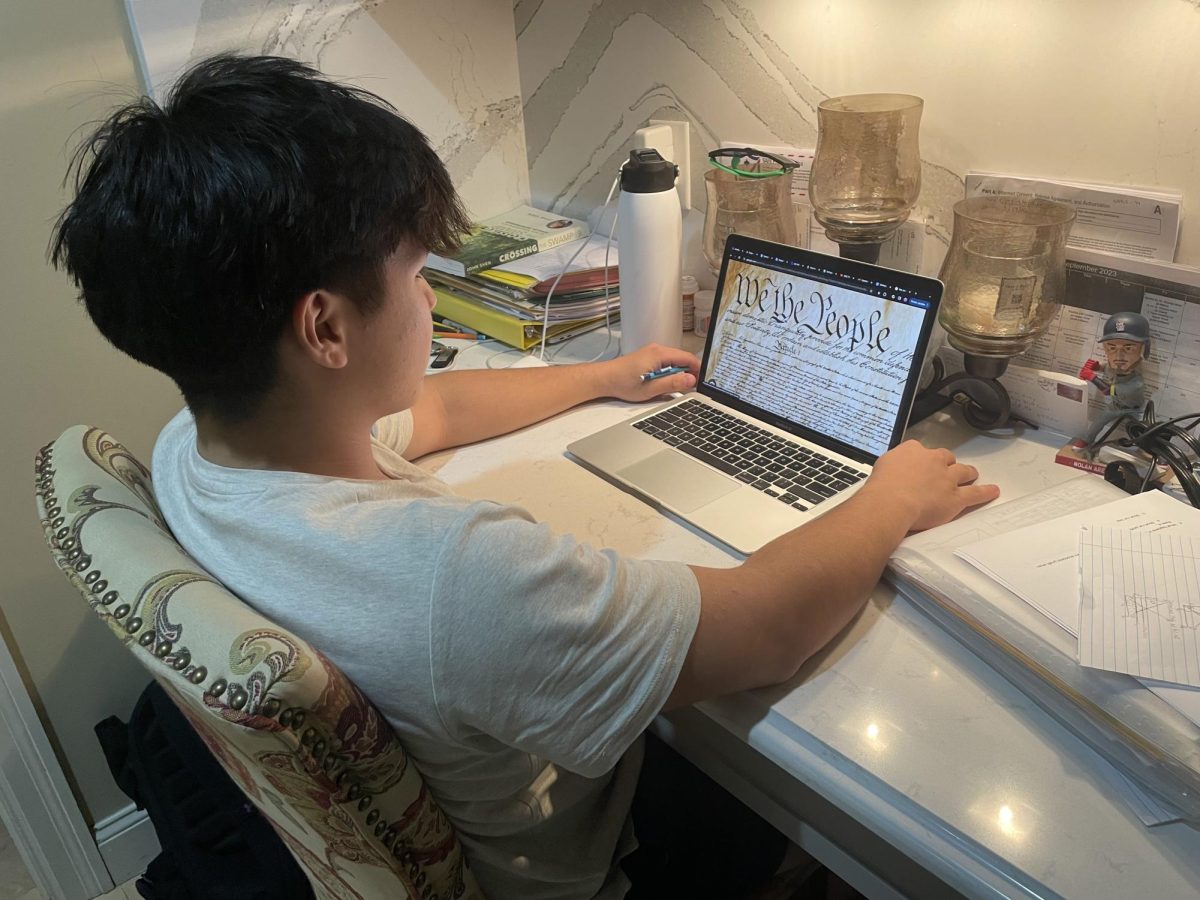

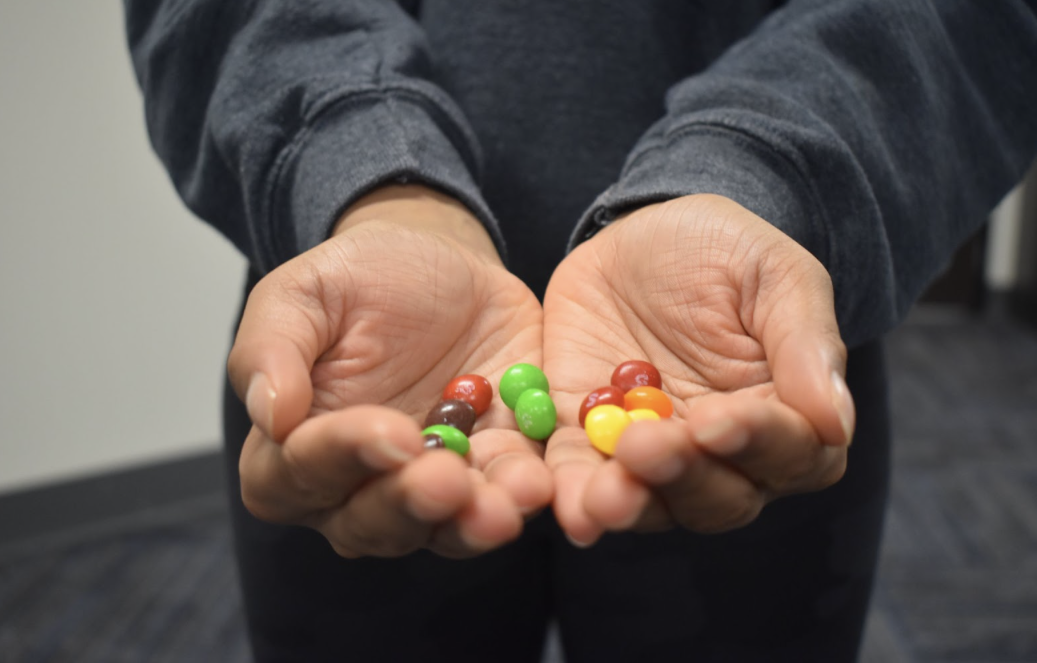

![Moviegoers smile for a picture after watching the Bollywood movie “3 Idiots.” The event ran from 4-8 p.m. on Saturday, March 9 and was open to students across the Parkway School District. “I decided to come to the movie night because I wanted to introduce my non-Indian friends to the rich culture and entertainment of Bollywood. One of my favorite parts [of the night] was the combination of [the] amazing food and the pure comedic entertainment. [It] was unmatched,” sophomore Aryan Allu said.](https://pwestpathfinder.com/wp-content/uploads/2024/03/IMG_5479-e1710180016483-1200x900.jpg)
![Senior Kylie Secrest volunteers at the blood drive signup table.The table provided students aged 16 and up with information about the drive and assisted them in the signup process. “We decorated the stand in the lunchroom with heart related or red decorations from either Dollar Tree or Five Below,” Secrest said. “This year was my first year doing [the blood drive] and it was fun. I got to be able to meet new people and help out the community.”](https://pwestpathfinder.com/wp-content/uploads/2024/03/image2-1200x800.jpg)
![Performing a dance, athletes wave their pompoms in the air as special education teacher Wendy Zieleskiewicz stands behind them. Zielesckiewicz, who has been teaching for 25 years, didn’t know what she wanted to pursue until she remembered her love for children. She now sees her students benefiting from Special Olympics. “Its really fun to see [athletes] grow. [Special Olympics is] incredible — Its high energy, its a lot of fun. Its cool to see the kids all working together and having a good time. They make connections with other students, [and] its amazing to see how much fun they have. I hope that they can make and maintain relationships with people that are not in this classroom. I always encourage [my students] to participate [in Special Olympics] because it is a lot of fun and even if they dont make a best friend, you still have an opportunity to grow,” Zieleskiewicz said.](https://pwestpathfinder.com/wp-content/uploads/2024/02/unnamed-5-1200x798.jpg)
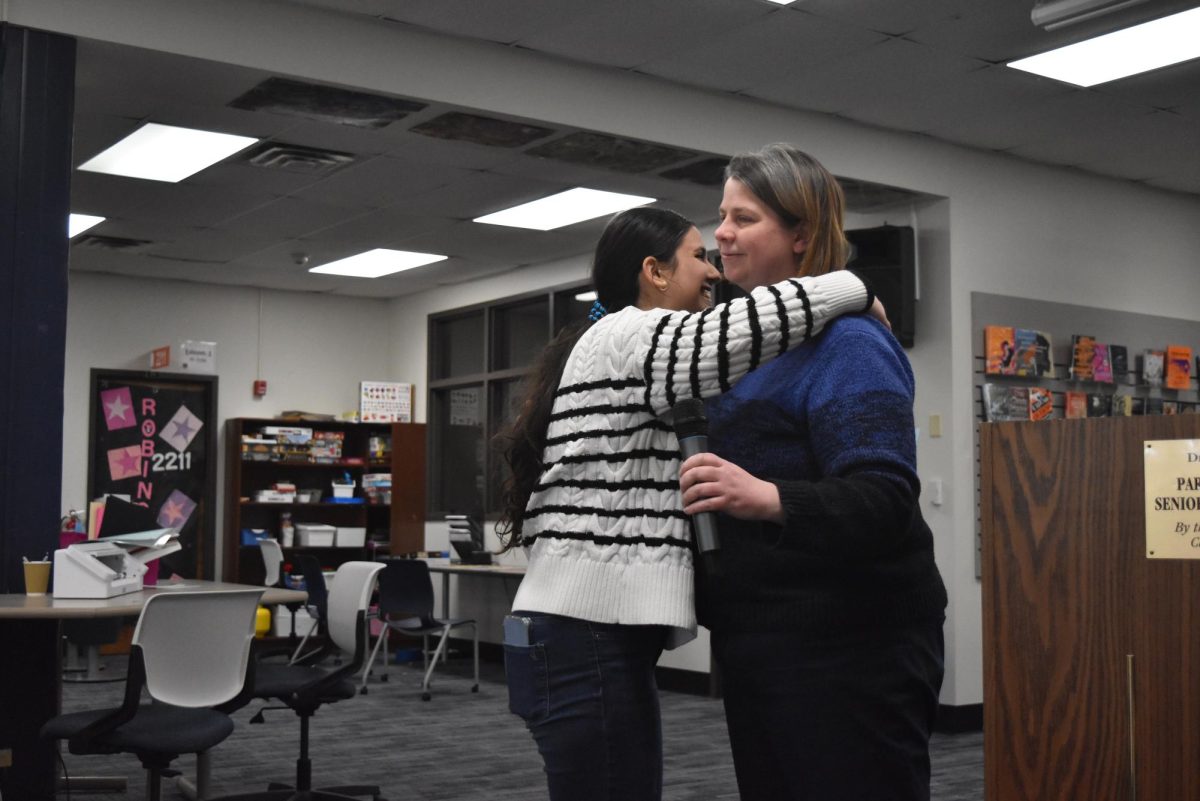
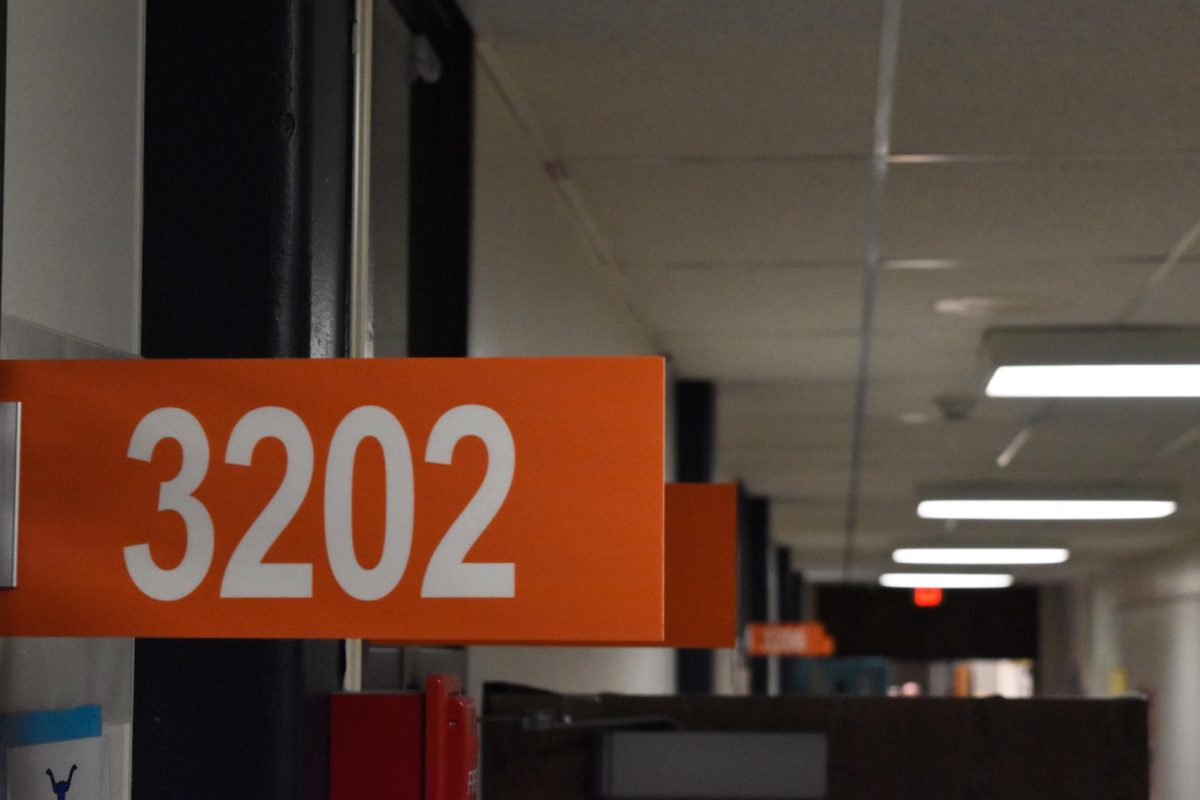
![Smiling widely, Principal John McCabe congratulates English teacher and English Department head Shannan Cremeens on winning the 2023-2024 Teacher of the Year title. Sophomore Cooper Oswald was a witness to the celebration. “We were all pretty excited. We were all clapping and standing up. We even [got to] take a picture with her,” Oswald said.](https://pwestpathfinder.com/wp-content/uploads/2023/12/TOYvertical-1200x954.png)
![English teacher Leslie Lindsey smiles for a photo behind her desk. Growing up, Lindsey participated in many things outdoors, learning life skills that she still uses today. “I loved fishing and was never grossed out by it. I could get my hands dirty and spend time outside; even when it was cold, I didnt care. Fishing takes a lot of patience, and that is [now] a virtue of mine because I have great patience that translates into my classroom,” Lindsey said.](https://pwestpathfinder.com/wp-content/uploads/2024/04/IMG_6632-1-e1712758336310-1200x983.jpeg)
![Each year, as temperatures start to rise, students await the coveted spring break, a week-long vacation taking place from March 16-24. Students and staff appreciated the respite from school and the sunny weather that came along with it. “I enjoyed traveling as a way to spend spring break [and] have a last trip with my family before college. I wish spring break was a little longer so I could have spent more time and not have a quick turnaround coming back to school,” senior Norah Rutkowski said.](https://pwestpathfinder.com/wp-content/uploads/2024/04/Spring-break-Shenanigans-1-1200x800.png)
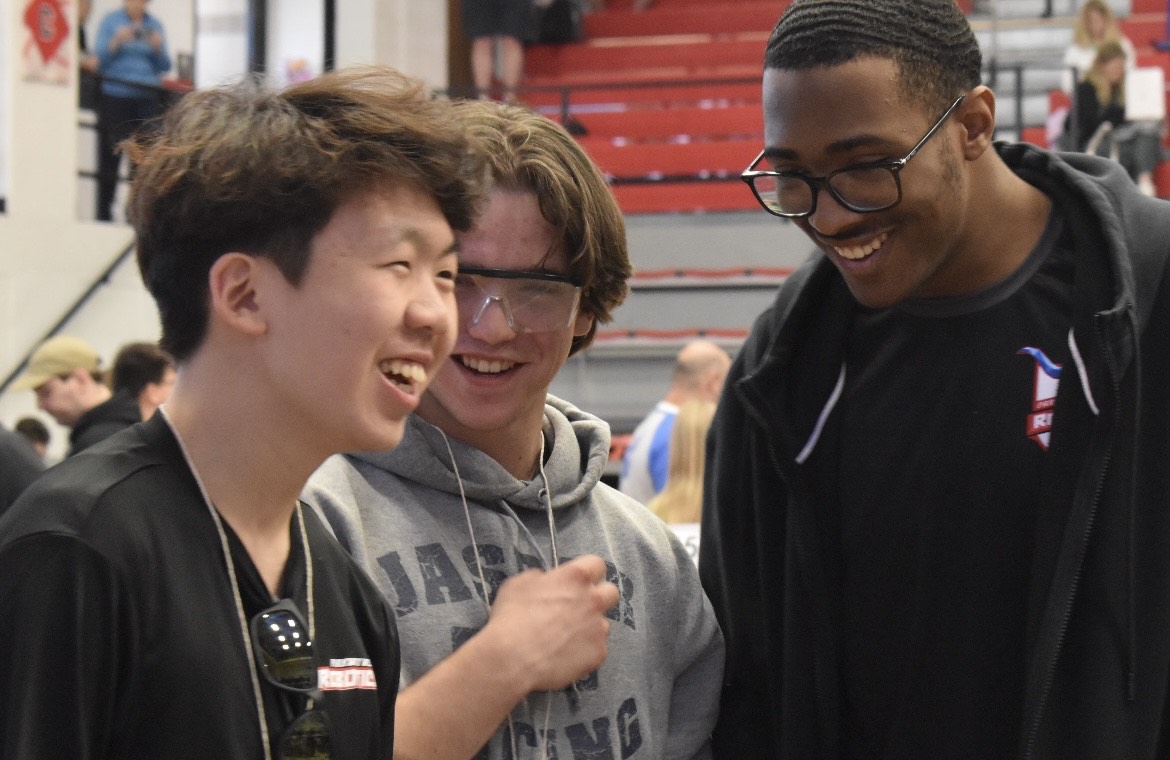
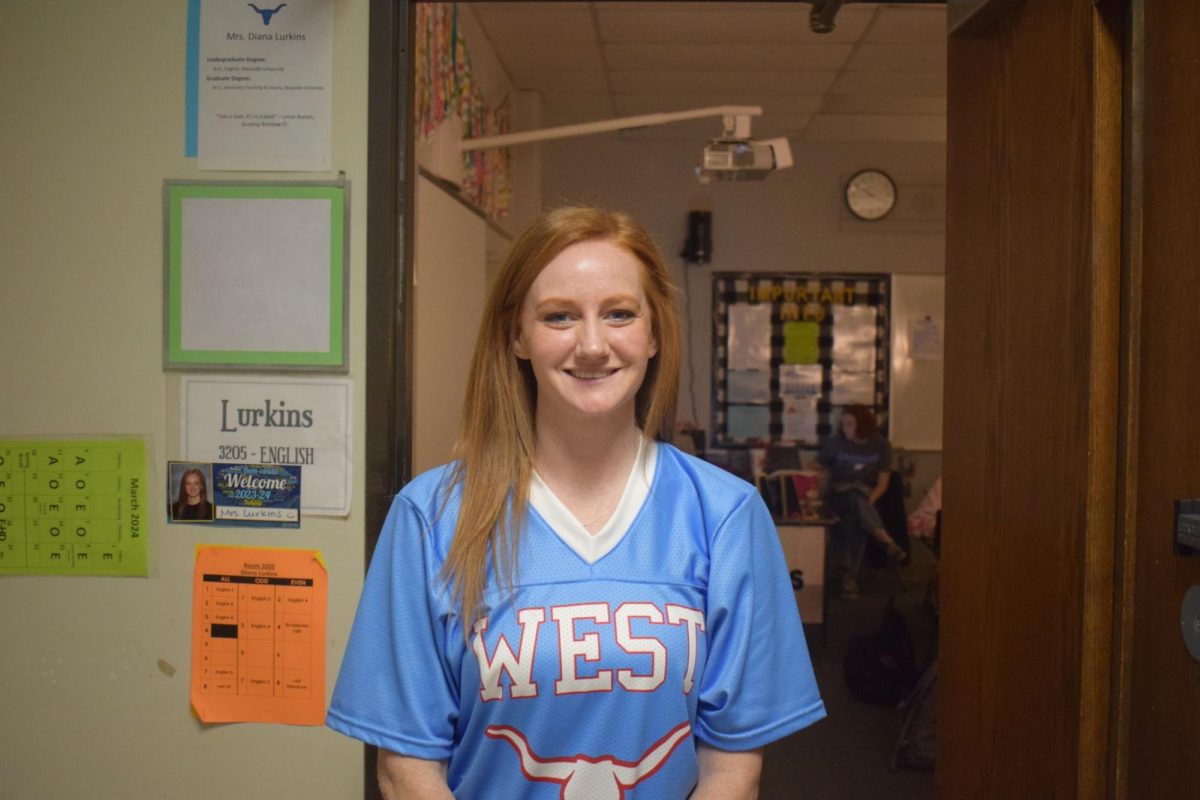

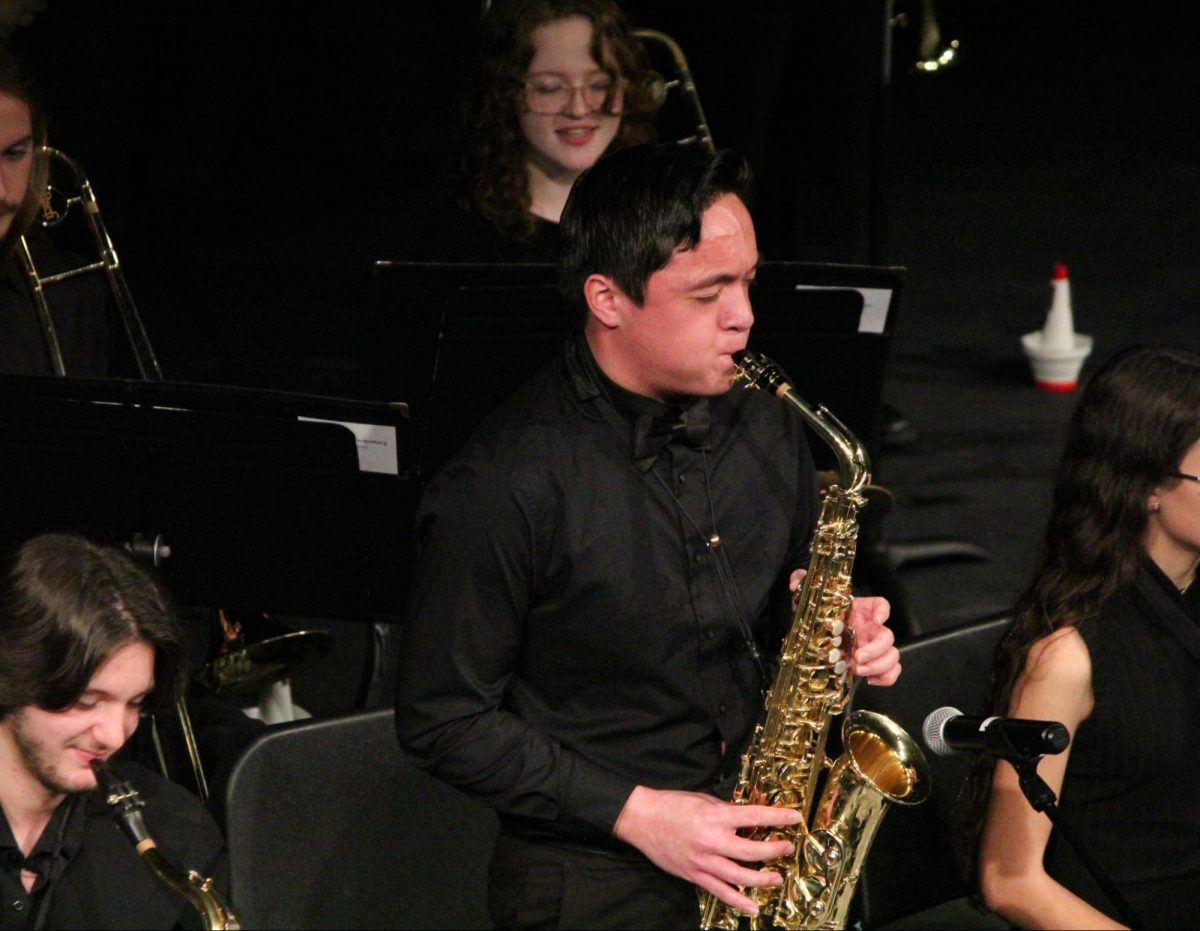
![Senior Dana Zafarani poses in paint reading “Women, Life, Freedom” and “#BarayeAzadi” as a protest against the Iranian government. The experiences of Iranian women inspired Zafarani to assist in any effort to protect women’s rights. “The world should live in peace. Every woman deserves to be equal. Every woman deserves love [and] kindness,” Zafarani said.](https://pwestpathfinder.com/wp-content/uploads/2023/11/Screenshot-2023-10-31-12.54.47-PM.png)
![Business and personal finance teacher Evan Stern stands in front of his classroom. After facing hardships growing up, Stern learned how to deal with them with the help of role models like his dad. “We dealt with some trauma when I was in middle school, and my dad had to be responsible for all three of us while he was working full-time. I know he had to sacrifice a lot. Im sure it was really hard for him, but looking back on it, he did a really good job . I didnt appreciate everything that he did at the time because I was so young. Now, Im engaged and probably going to have kids of my own in the next couple of years so I [am starting] to look at things differently,” Stern said.](https://pwestpathfinder.com/wp-content/uploads/2024/02/Untitled-7-1200x900.jpg)
![Holding his two smiling daughters in his arms, Principal John McCabe celebrates earning his doctorate degree. He attended Maryville University for two years and reached his goal of achieving a Doctor of Education: Educational Leadership degree after months upon months of hard work and long nights. “Im not going to lie, Im glad I have another night of my life back when Im not at school till very late,” McCabe said. “I can spend more time with my family and with my friends [who] are here at [West]. Im really happy about that.”](https://pwestpathfinder.com/wp-content/uploads/2024/01/mccabefeature.png)
![Art teacher Katy Mangrich sits in her classroom, smiling for a picture. During her time in high school, Mangrich learned several lessons that she now passes on to her son. “The biggest life lesson that I learned is honesty. I wouldnt say I was the best teenager, but I learned very quickly in high school to always be forthcoming and honest with my parents because it always ended up serving me better in the long run. [My parents] might have been upset with me [and the mistake I made], but I wasnt going down the rabbit hole of a lie because that was just going to get me into more trouble,” Mangrich said. “I passed [that lesson] along to my nephew. Honesty is always your best approach; just don’t lie. I say that to my son all the time. Theres no advantage to lying, [and] thats a huge takeaway [from] how my parents raised me.”](https://pwestpathfinder.com/wp-content/uploads/2024/01/Screenshot-2024-01-26-10.10.12-AM.png)
![Social studies teacher Aaron Bashirian smiles in front of his classroom. Bashirian didn’t know he wanted to be a teacher from early on, but he found the choice to be a good one. “I started [teaching] because there was an opportunity for me to experiment with it. Fortunately, [teaching] was a good choice. In 2012, I became a teacher at Parkway at the Alternative Discipline Center, which is where they send suspended kids to keep being educated if they choose. I spent six years there and then I got drafted to West, [where] Ive been for about six years,” Bashirian said.](https://pwestpathfinder.com/wp-content/uploads/2024/01/Untitled-35-1200x800.jpg)
![English teacher Angela Frye stands behind her desk in her classroom. Frye went through a lot of personal struggles to get to where she is today, and with each step in her life, she carries her gratitude for those obstacles. “Everything happens for a reason. I believe in [the concept of] good energy, good karma, [from] being a good person. Those are things I dont take lightly. [Struggles] build character. You really appreciate everything you have when you have to work for everything you have,” Frye said.](https://pwestpathfinder.com/wp-content/uploads/2023/11/Untitled-8-1200x800.jpg)

![The celebration of Women’s History Month, originating in 1987, marks an annual acknowledgement of women’s contributions to various fields of work. However, many female revolutionaries remain underrepresented in our history books, oftentimes overshadowed by male counterparts who could reach a greater audience because of their status. “Back then, women didnt have the voice that we do now, [but] their actions gave us the voice we have today to be able to speak up. Now, we share information to show how far we came from,” Black Student Union member and sophomore Jariyah McCalister said.](https://pwestpathfinder.com/wp-content/uploads/2024/04/feature-photo-unsung-4.png)

![Celebrities are inescapable in our day-to-day lives, constantly reminding us of whatever is newest in their lives. And for us on the receiving end, we find ourselves devoting time and effort to vie for just the tiniest sliver of their attention. “[Taylor Swift] is my favorite celebrity, and to me she means someone who is kind, smart and caring,” junior Swati Kumar said. “I feel connected to her and her music; I listen to her everyday and I find [her] very relatable.”](https://pwestpathfinder.com/wp-content/uploads/2024/01/Parasocial-1.jpg)
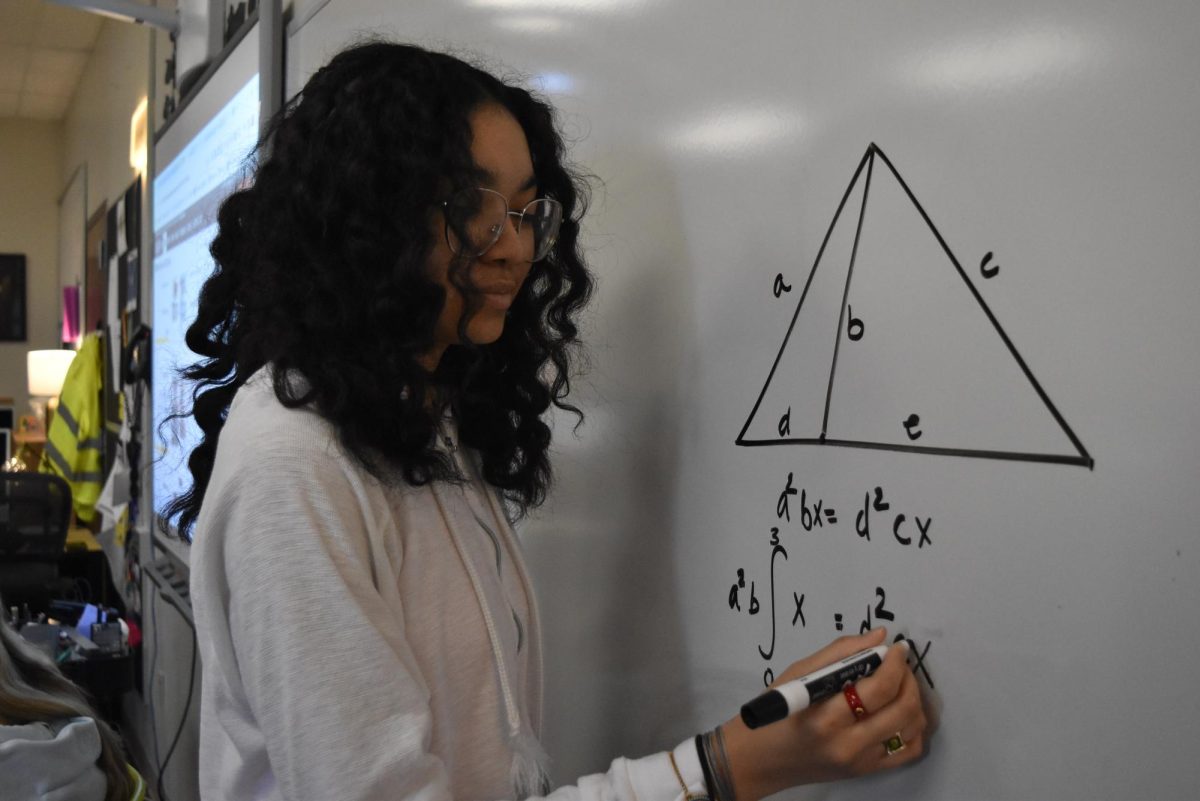
![January 2024 marks over seven decades since the publishing of “The Bell Jar.” In those seven decades, the novel has opened the eyes of countless women to the unfair treatment they’ve faced, particularly being percieved as nothing more than mothers and the consequences that arise from that. “To my knowledge, [“The Bell Jar” was] one of the earliest novels that explores a womans mental health and inner journey and allows her to go through struggles and make mistakes without vilifying [her]. Shes ambitious yet flawed and unsure how to proceed, like [many] women at the beginning of the 1960s. My mom was born in 1950 and grew up hearing that if she wanted to work, she had three choices: nurse, secretary and teacher. It was a brave new world when she found out there were more options. But that also comes with fear and anxiety and the judgment of others. Sylvia represents that journey,” French teacher Blair Hopkins said.](https://pwestpathfinder.com/wp-content/uploads/2024/01/Mother-26.png)



![For the past three years, Parkway has administered high school finals after winter break, a practice that proves to be detrimental to the success as well as the mental health of students. With finals after break appearing to do more harm than good, the question of what changes can be made arises time and time again. “The pressure for finals is difficult, and to have that [pressure for] a few weeks because youre on [a] break can make you generally sad. Its a bummer in general. I wish [finals] were before break, so we [could] have a break to sleep, celebrate and not study. Everyone Ive talked to about it is like yeah, finals sucks, and I wish that wasnt a thing,” junior Meadow Kostial said.](https://pwestpathfinder.com/wp-content/uploads/2024/01/decembereditorial-1200x963.jpg)
![Since its introduction and subsequent explosion on the world stage, social media has proven to be a detriment to the fight against misinformation and fake news in the media because of its targeted marketed tactics and abuse of unified communities. This being said, taking responsibility over what you consume online and deciding whether or not it’s true is crucial. “It’s important to notice that [the spread of misinformation through social media] is happening, and as a teacher, media literacy is so important to teach,” journalism teacher Lindsey Katz said.](https://pwestpathfinder.com/wp-content/uploads/2023/11/nov-editorial-feature-1200x800.jpeg)












![2023 was defined by female vocalists such as Miley Cyrus, Taylor Swift and Paramore’s Hayley Williams as their diversity and talent amongst their respective genres topped the musical charts. Williams took to Instagram to show her gratitude for having owned the No. 1 spot on Billboard’s Top 100 chart. “We know enough by now to know success doesn’t equal value. That being said, to experience the [No. 1] on this album, as this version of Paramore, is such a sweet and surreal moment to celebrate together,” Williams wrote.](https://pwestpathfinder.com/wp-content/uploads/2023/12/2023-A-Musical-Recap-2.0-1.png)




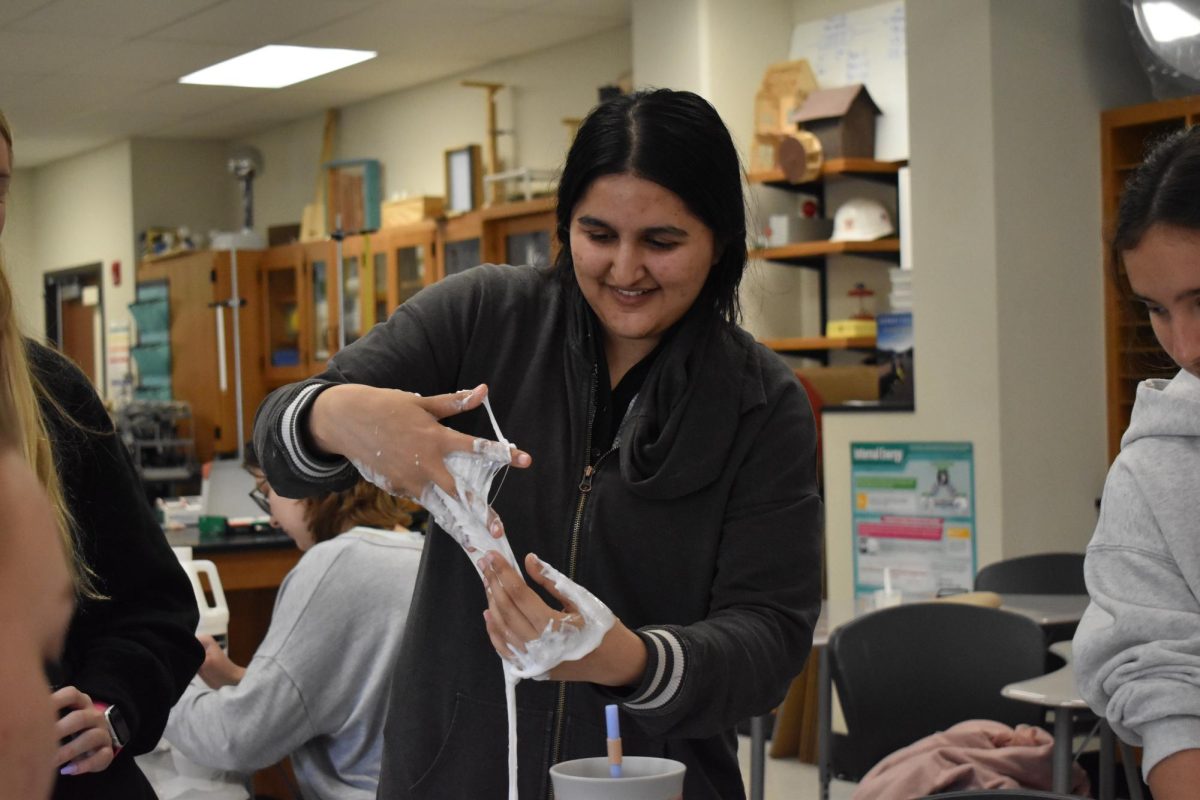





![In perfect shooting form and with eyes on the rim, junior Tyler Kuehl is about to shoot his next basket in the last game of the season against Marquette High School. Kuehl has been playing basketball since he was 5. “Even though I played basketball all my life, the game-winning shots can be pressure, its confidence. If youre going into that shot and not thinking that youre gonna make it, its obviously not going in. And if you believe, [it will]. Thats the only way you can succeed,” Kuehl said.](https://pwestpathfinder.com/wp-content/uploads/2024/01/unnamed-32-1-1200x1200.png)

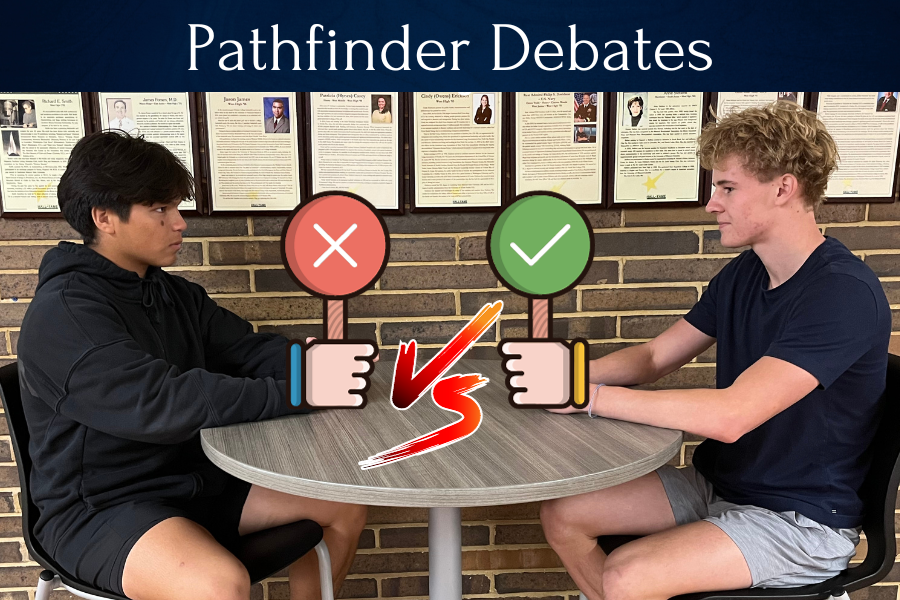



![“Im passionate about volleyball. Ive been playing for six years. I play it because I like the way that, [even though,] its a team sport, its also focused on [a person] individually; especially in my position since Im the back row defense where the ball can hit me. Its [up to] me, I can’t blame anybody else. I like how its very focused on [the] performance and how well [I] react to how the other team plays. The way I play really matters to me because it’s a team sport and I dont want to let my teammates down.” Emma Barton, 9](https://pwestpathfinder.com/wp-content/uploads/2024/04/image1-1200x800.jpg)
![“Im very passionate about debating, [which is why] I am [a member of the] speech and debate team. I like how it offers opportunities to speak [from] viewpoints on different opinions with people outside of our group from other schools around our communities. I usually participate in public forum debates [and] the topic [we speak about] changes every month. One debate that I was most invested in [took place in] February; which was [about whether or not] the US federal government should ban all single use plastics. I feel like I spent the most time working on this case [than any other discussion], and I was determined to make it into finals. I hold competition very dear to me. I have only gone to two tournaments so far, but Ive already made it into the finals. [Finals are important because], I think it really shows how much growth and [effort you’ve put in through the battle].” - Bethany Liao, 9](https://pwestpathfinder.com/wp-content/uploads/2024/04/Bethany-L-1200x800.jpg)
![“My goal for soccer this season is not only to improve in skill, but also to improve my way of communication. [To] not always put the blame on myself since a team [improves together]. So my goal [coming into the team] was to not be so harsh on myself and to know that not the whole team depends on [me]. We all work as a team, and everyone [plays] a different [role]. The most exciting game this season was the first game, even though we lost it was like an exciting experience because it was the first game and it was nice seeing all my friends playing on the field together. I really improved my communication [skills]. My goal is to continue to strengthen my [ability of] communication [with the team] and to also improve my skill [at playing soccer].” - Ali Abdulsattar, 9](https://pwestpathfinder.com/wp-content/uploads/2024/03/pasted-image-0-1200x800.png)
![“I’ve been playing baseball since I was four. The MLB inspired me to play, [but] my dad is my biggest inspiration. Hes very respectful and very hardworking. He taught me to stick close to your friends who will help you achieve your goals and not get in the way of them. Baseball has made me grow with the way I start friendships. Its helped me grow [more with] athletic performances and how I accomplish things throughout life. Friendships play a big part in baseball, [especially] when you’ve been playing on the same team since you were a kid. It was really nice playing with the same people because I really got an understanding of who they are and how they play the game. You also get to see how they grow athletically and mentally over time. I formed friendships with those people I spent most of my time with and it was hard to leave that team, it’s like I left a family. [My goal for this season] is to lead my team and to have a really good record. I’ve already built relationships with my teammates through classes and just hanging outside of school.” - Isaac Sinak, 9](https://pwestpathfinder.com/wp-content/uploads/2024/03/IMG_0119-1200x800.jpg)
![“I started [the First Generation Club] because it was really hard to find people who were [a] part of the immigrant community. I didnt share a lot of similar experiences or have a similar background to my non-first-generation peers. Sometimes Id feel distanced or like I didnt belong because of that. I wanted to meet more first-generation students and be with people who connected with my experiences. My parents encouraged me to stay dedicated to my education, and thats one of the main focuses of the club. I wanted to create a space for everyone to come together [at] West, stay dedicated to our studies and have an opportunity to volunteer with friends. One of the challenges we faced in getting this club started was finding opportunities for us to organize school and volunteer[ing] events. Reaching out to people and getting help can really set things up for you. Ive learned a lot about communication through starting this club; the First Generation Club has made me a more vocal person. Having a space to talk to people [with] similar experiences [as] mine is a rewarding aspect [of being a co-founder]. [My main goals] for [the school is to create] a better environment and a space where everyone can come together, study together, advance themselves and enjoy.” - Giuliana Ghiretti, 9](https://pwestpathfinder.com/wp-content/uploads/2024/03/Giuliana-Ghiretti-9-1200x800.jpg)
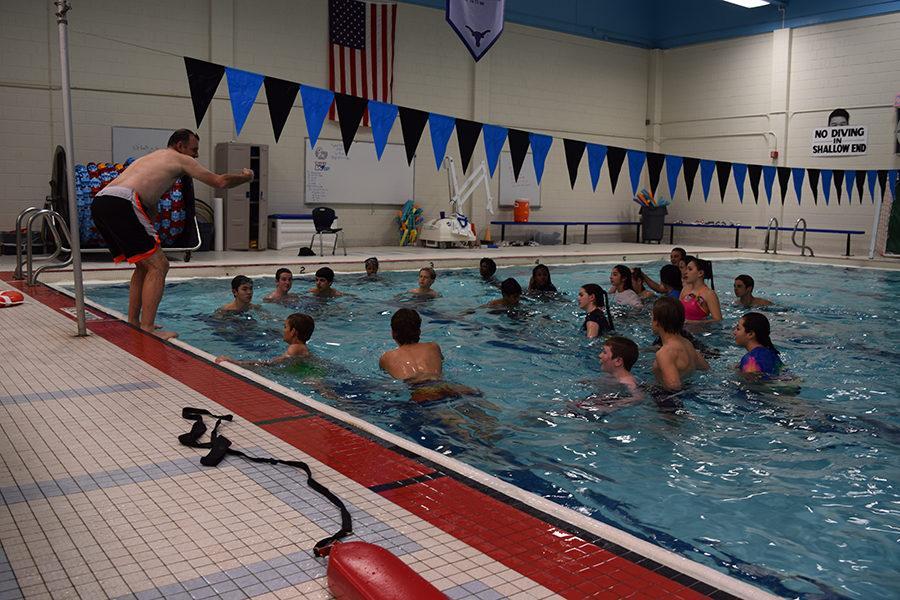
![According to the American Academy of Child and Adolescent Psychiatry, in the United States, 90% of teenagers have used social media. In an increasingly digitized world, it can be difficult to figure out where to draw the line between your personal life and what you post. “The most influential people, your parents or your principal, would they be alright with what you were doing if they [were] sitting right next to you?” physical education and health teacher Jessica Wheeler said.](https://pwestpathfinder.com/wp-content/uploads/2023/10/IMG_9904-1-1200x799.jpg)
